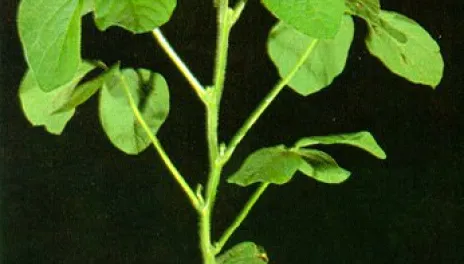Weed Management in Soybean
Good day!
Rainfall for last week ranged from 0.46 inches to 2.4 inches with an average of 1.25 inches. The high temperature for the past week ranged from 73 to 98 degrees Fahrenheit with an average of 82 degrees Fahrenheit. This is 5 degrees Fahrenheit above the normal average of 77 degrees Fahrenheit. The high temperature forecast for the coming week will be near normal.
No change in cases for Highly Pathogenic Avian Influenza (HPAI) this past week.
We have completed planting in the county, unless some fields get replanted due to the strong winds from last week.
Most crops have some amount of wind damage, but some fields, especially dry beans and soybeans were severely damaged from last week’s winds. Wheat is very far behind last year. Corn is nearly the same stage as last year believe it or not, but the soybeans and dry beans are behind development from last year.
Some soybean fields have very high weed densities in them while others that had preemergence herbicides applied are nearly weed-free. Some of these weedy soybean fields need to be sprayed soon. Weeds should not be over three inches tall.
The four most troublesome weeds in soybean in Griggs County due to resistance to glyphosate (Roundup) and other herbicides are waterhemp, kochia, horseweed (marestail) and common ragweed. This year biennial wormwood, Canada thistle and annual grasses are more common than last year and can be difficult to control.
Soybeans compete against weeds better than corn does and you do not need to worry as much about the loss of nitrogen since soybeans make their own nitrogen.
Weed control in soybean is complicated because there are so many different herbicide resistant traits in soybean. Make sure you know which herbicide system you have so you are not making any mistakes! The following traits and herbicides are available for our area: conventional soybean can only have conventional herbicides applied to them; glyphosate tolerant (GT), Roundup Ready, and Roundup Ready 2 Yield soybeans may only have glyphosate or conventional herbicides applied to them; Roundup Ready 2 Yield Extend soybean can have glyphosate, dicamba, or conventional herbicides applied to them; Roundup Ready 2 Yield Extendflex soybean may have glyphosate, glufosinate, dicamba, or conventional herbicides applied to them; LibertyLink soybean may only have glufosinate or conventional herbicides applied to them; LLGT27 soybean may only have glyphosate, glufosinate, or conventional herbicides applied to them in Griggs County; GT27 soybean may only have glyphosate or conventional herbicides applied to them in Griggs County; and Enlist E3 soybean may only have glyphosate, glufosinate, 2,4-D, or conventional herbicides applied to them.
Glyphosate applied alone will no longer control all plants of all species, therefore other herbicides need to be mixed with glyphosate or other herbicides need to be applied to control the four most troublesome weeds in the county. To control common lambsquarters with glyphosate apply the maximum rate and include a nonionic surfactant at 0.125 to 0.25% v/v depending upon how much surfactant is in the product already.
Two applications of glufosinate (Liberty) applied at 43 fluid ounces per acre to weeds three inches or less should control these troublesome weeds and other annual weed species including biennial wormwood. Two applications of glufosinate will suppress Canada thistle.
Follow all label requirements when applying dicamba to dicamba-resistant soybean. Remember dicamba can only be sprayed on dicamba-resistant soybean until June 30, 2022. The highest rate of dicamba will control the troublesome weeds.
Glufosinate plus Enlist One applied to Enlist E3 soybeans will control the four troublesome weeds. Enlist Duo is not very effective on kochia and horseweed. Enlist Duo can be weak on waterhemp and biennial wormwood. Glufosinate plus Enlist One applied to Enlist E3 soybeans will not completely control Canada thistle, but should suppress it. Enlist Duo should control Canada thistle.
Be sure to follow the rainfastness guidelines for all herbicides.
